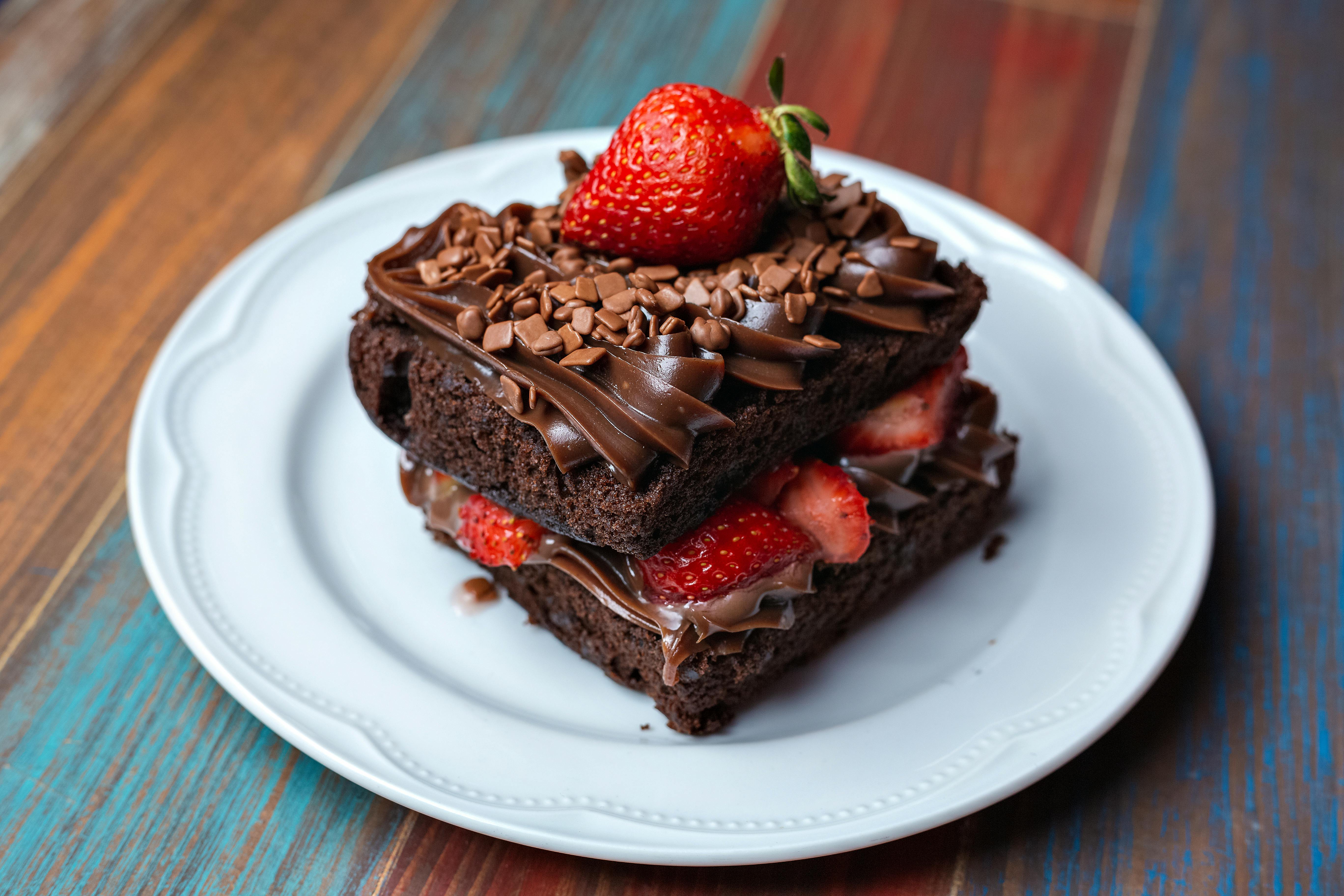If you have ever noticed your strawberries turning brown, you may be wondering what is causing this. Strawberries are naturally red in color, and it can be concerning when they start to discolor. Fortunately, there are a few common causes of browning strawberries that you can look into and take steps to prevent them from happening in the future. In this article, we will discuss why your strawberries may be turning brown and what you can do to prevent it from happening again.Brown strawberries are caused by a fungus known as ‘botrytis cinerea.’ This fungus is commonly referred to as “gray mold” and can affect many fruits, vegetables, and flowers. The mold forms a thin layer on the strawberry and can cause the fruit to take on a brown color. In addition, the fungus can cause the strawberry to become mushy or even rot. The best way to prevent brown strawberries from occurring is to properly store them in a cool, dry place away from other fruits and vegetables.
Common Reasons for Brown Strawberries
Browning of strawberries is a common occurrence and can be caused by a variety of factors. One of the most common causes is over-ripeness. As strawberries ripen, they become softer and their natural sugars begin to break down, which can cause them to brown. Additionally, exposure to air can cause discoloration as oxygen reacts with the natural pigment in the strawberries. Other causes of browning include disease and damage from pests or adverse weather conditions. In some cases, browning can also be caused by poor storage practices such as insufficient refrigeration or too much handling.
In order to prevent browning, it is important to select strawberries that are not overly ripe or damaged. It is also important to store them properly in a cool, dry place and to avoid exposing them to air for extended periods of time. With proper care and attention, you can enjoy fresh, sweet strawberries for days after purchase!
Preventing Strawberries from Turning Brown
Strawberries are a delicious and versatile fruit, but they can easily spoil and turn brown. Fortunately, there are a few simple steps you can take to keep your strawberries fresh for longer.
The first step is to store your strawberries in the refrigerator. When kept at a cool temperature, strawberries will last for up to three days. Make sure to place them in an airtight container or bag and remove any excess moisture before storing them in the fridge.
Another way to keep your strawberries from turning brown is to add an acid such as lemon juice or vinegar to the container before storing them in the refrigerator. The acid helps to slow down the ripening process and prevent browning. You can also add a sprinkle of sugar or honey to add sweetness and further help preserve the flavor of your berries.
Additionally, try not to wash your strawberries until you are ready to use them. Washing them too early will increase their rate of spoilage as well as encourage mold growth. If you must wash them ahead of time, make sure you dry them thoroughly with a paper towel before storing them away.
Finally, if you notice that some of your strawberries have already started to turn brown, don’t throw them away! You can still use them in jams or sauces where their flavor won’t be affected by the discoloration. Just make sure you use them within two days of noticing brown spots on the fruit.
By following these simple steps, you can keep your strawberries fresh and flavorful for longer!
Can I Eat Brown Strawberries?
Yes, you can eat brown strawberries. However, it is important to note that the brown coloration may be a sign that the strawberries are overripe or have been damaged in some way. If you are unsure of the quality of the strawberry, it is best to discard it.
It is also important to examine each strawberry before eating it as some browning may be caused by mold or mildew growth. If you see any discoloration or signs of mold on the surface of the strawberry, it should be discarded immediately.
If you find that your strawberries are beginning to turn brown before they have had a chance to fully ripen, this could indicate that they are not being stored correctly. Strawberries should always be kept in a cool and dry place and should not be stored for longer than a few days at a time.
In summary, while it is possible to eat brown strawberries, it is important to inspect them closely and discard any that show signs of damage or discoloration. If stored correctly, fresh strawberries can last several days without turning brown and can still be consumed safely.
Signs of Spoiled Strawberries
Strawberries are a delicate and delicious fruit, but when they go bad, they can become a health hazard. Knowing the signs of spoiled strawberries is important for food safety. When strawberries are past their prime, they will start to show signs such as discoloration, mold growth, and an unpleasant smell.
Discoloration of the skin is one of the most common signs that a strawberry has gone bad. If the skin is turning white or yellowish in color, it may mean that it is no longer safe to eat. The strawberry may also become soft and mushy instead of firm and juicy.
Mold on the strawberries is another sign that it has gone bad. Mold can appear as small black spots or fuzzy white or gray patches on the surface of the strawberry. If there are any signs of mold growth, throw away the whole container as it could contain harmful bacteria that can cause food poisoning.
Another sign that strawberries have spoiled is an unpleasant smell. You may notice a musty odor coming from the berries or a sour smell if they have been stored for too long. If you notice any strange odors coming from your strawberries, it’s best to discard them immediately to avoid any potential health risks.

Diseases That Cause Browning of Strawberries
Strawberries are a popular fruit that is packed with health benefits, but unfortunately, they can also be affected by diseases and other issues. One common issue that affects strawberries is browning. Browning can be caused by several different diseases, including gray mold, powdery mildew, and botrytis blight.
Gray mold is a fungal disease that is caused by the fungus Botrytis cinerea. The disease can cause the berries to turn brown and become soft and mushy. It typically occurs when the conditions are moist and humid, such as during wet springs or warm summers with high humidity levels.
Powdery mildew is another fungal disease that affects strawberries. It is caused by the fungus Podosphaera aphanis and it appears as white or grayish-white spots on the leaves and fruits of the plant. The spots may eventually turn brown as the disease progresses. The disease usually occurs when temperatures are between 60-80°F (15-27°C) and there is high humidity or wet weather conditions.
Botrytis blight is another fungal disease that affects strawberries. It is caused by the fungus Botrytis cinerea and it appears as brown spots on the fruits or leaves of the plant. The spots may become larger over time until they cover entire areas of the fruit or leaf surface. This disease typically occurs during wet weather conditions or when there are high levels of humidity in the air.
These diseases can cause browning of strawberries, so it is important to take measures to prevent them from occurring in your garden or field. Appropriate cultural practices such as proper watering, fertilization, weed control, pruning, and harvesting can help to prevent these diseases from occurring in your strawberry crop. Additionally, controlling insect pests such as aphids and mites can help reduce their spread in your garden or field.
Does It Matter When I Pick My Strawberries?
Picking strawberries at the right time is essential for ensuring that the fruit is in peak condition and that it tastes its best. Strawberries are a short-season crop, so timing is important for getting the most out of them. Knowing when to pick strawberries can help you get the most flavor and sweetness out of your crop.
The best time to pick strawberries is when they are fully ripe and have turned a deep red color. This will ensure that the berries are sweet and juicy. To check if they are ripe, gently twist them from their stems. If they come off easily, then they are ready to be picked.
When picking berries, try to avoid any that have blemishes or mold on them as this could affect their taste. Also make sure that you don’t leave any berries behind as this can attract pests or disease to the area.
In terms of how often you should pick strawberries, it depends on the variety you’re growing and how much ripe fruit you need at once. Generally speaking, it’s a good idea to pick every few days during peak season so that you can enjoy fresh fruit throughout the season.
Strawberries also tend to ripen unevenly, so it’s important to check each plant for ripe fruit every few days. This will help ensure that no fruit goes bad before it’s picked and eaten.
Overall, timing is key when picking strawberries so make sure you check your plants often and harvest them when they are fully ripe for maximum flavor and sweetness!
Strawberries Turning Brown
If your strawberries are turning brown, there are several things you can do to help prevent further damage. The first is to pick the berries when they are ripe and discard any that have already started to turn brown. Strawberries should be stored in a cool, dry place and away from direct sunlight. Keeping them in the refrigerator can help extend their shelf life. When preparing strawberries for eating or cooking, it is important to wash them thoroughly and remove any damaged or moldy pieces before consuming or using them. Additionally, adding a bit of lemon juice or vinegar to the water can help prevent discoloration and retain the color of the berries. Keep in mind that once strawberries have started to turn brown, they will not return to their original color and should be discarded.
If you want to extend the life of your strawberries even further, you can freeze them after washing and cutting off any damaged parts. To ensure maximum flavor and freshness, spread out the cut strawberries on a baking sheet before freezing so that they don’t stick together. Once frozen, transfer them into an airtight container or freezer bag for later use. Frozen strawberries can last up to six months when stored properly.
Finally, always check your berries regularly for signs of spoilage. If you notice any whitish-gray spots on your strawberries, discard them immediately as this may indicate mold growth which can spread quickly and contaminate other fruits in your refrigerator or storage area. Taking these steps can help ensure that your strawberries remain fresh and delicious for as long as possible!

Conclusion
Strawberries are a delicate fruit and can easily be damaged, leading to brown patches. The main cause of browning in strawberries is damage to the skin caused by mishandling, temperature fluctuations, or disease. If your strawberries are turning brown, it’s important to take action quickly. Be sure to inspect your strawberry plants for signs of disease and fungal growth, and check for any signs of improper handling or storage. If you can identify the cause of the problem and take steps to prevent it, you can help protect your strawberries from further damage.
Keeping your strawberries healthy starts with proper care in the garden and continues with careful handling during harvesting and storage. Taking steps to prevent damage will help keep your strawberries looking beautiful for longer!



